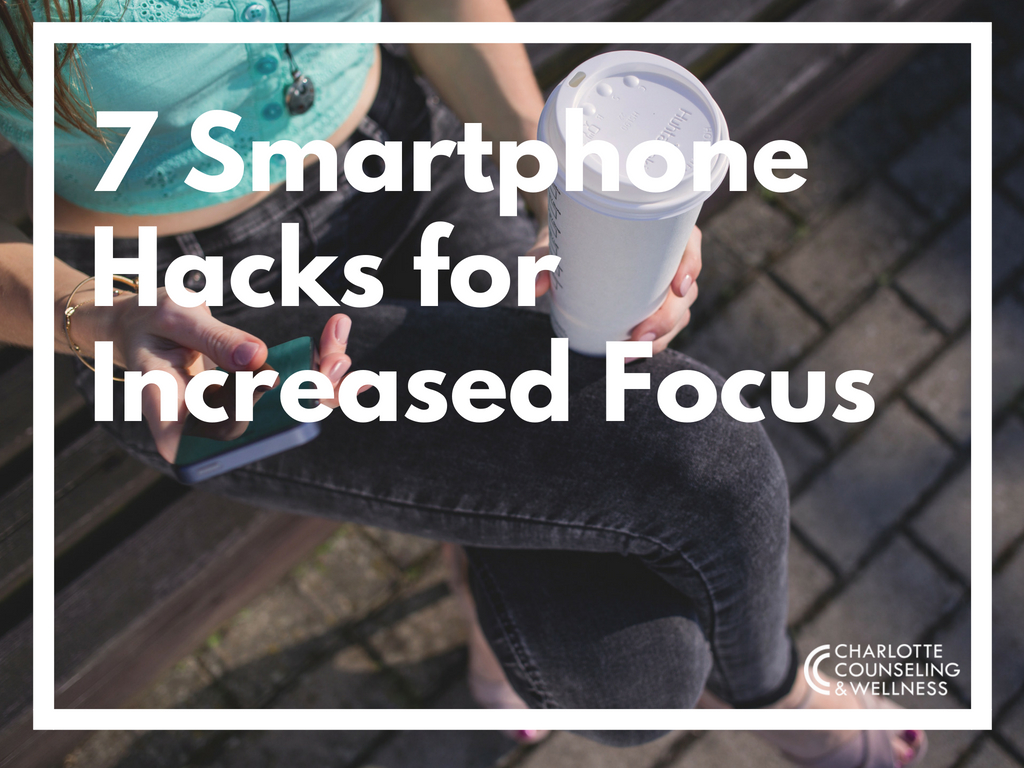7 Smartphone Hacks for Increased Focus
I still remember my first cell phone. It was a Nokia 5110. It didn’t text. It didn’t flip. It didn’t even vibrate.
I was a college student when I got it, and I remember setting its ringtone to a single beep before each of my classes, hoping that a muffled beep from my pocket would alert me of a call without making much of a scene.
On those rare occasions when someone would call me during class, the strategy always worked, at least in one respect: Seldom would anyone even notice the sound.
However, I quickly realized that the strategy had a major drawback. The constant anticipation of a sound from my pocket created a major distraction for me.
It wasn’t that I couldn’t focus at all; rather, I simply couldn’t give my full attention to what was happening in the classroom. Every few seconds, my focus would shift, if only momentarily, to my phone.
Was that a beep I heard?
Should I take my phone out to check?
What if it’s an emergency?
What if I do hear a beep? Will others hear it, too?
These and similar thoughts pulled me further and further away from the present moment.
The Addictive Properties of Smartphones
Fast forward 15 years or so and the single beep that vied for my attention as a college student has become an incessant flood of newfangled “beeps”—email notifications, weather alerts, tweets, text messages, up-to-the-minute news, and countless other smartphone stimuli that compete for our immediate attention.
It’s easy to understand the many reasons why so many of us have welcomed smartphones, among other forms of innovative technology, into our lives. These devices have enhanced our lives in many significant ways.
As is often the case, however, progress frequently involves loss, and when it comes to smartphones, perhaps the most significant loss of all is none other than our attention—and with it, our self-control, self-awareness, and genuine connection to others.
Whether you’re actively looking to change your relationship with your smartphone or simply curious about what change could look like, the following 7 ideas for altering your smartphone habits can help get you started on the path to greater focus.
Ideas for Modifying Your Smartphone Use
1. Hide enticing colors.
What makes Google, Twitter, Facebook—and by extension, our phones—so addictive?
One thing, believe it or not, is colors. Facebook, for example, noticed a significant uptick in activity after the social media giant changed its notification icon from blue to red. So, one of the easier ways to counter your phone’s ability to grab your attention is to move apps with red or other brightly colored icons off your home screen.
2. Adjust notifications.
Take a close look at the notifications you’re currently receiving. Which ones are essential and which ones aren’t? For each of the notifications currently activated on your phone, ask yourself: Is this information that demands my immediate attention? If your answer is not a resounding yes, consider disabling all related notifications.
3. Declutter your home screen.
Even with red icons off your home screen and non-essential notifications disabled, certain apps have a way of pulling us in. Games and social media are likely culprits here, but there are likely others, too. By moving these apps off your home screen, they’re less likely to entice you into a state of distraction.
4. Set boundaries.
Maybe your situation prevents you from disabling some of the more distracting notifications you receive, such as emails, Tweets, or Facebook updates. In this case, you may want to consider scheduling breaks from your smartphone at different times during your day. Offtime and other similar apps are a great option for limiting your phone’s distracting properties during times when it’s feasible for you to disconnect. These apps allow you to manually set your phone to “sleep” for a specific period of time, usually an hour or more.
5. Distance yourself from your phone.
Many of us are more susceptible to mindless cell phone use at specific times during the day. For me, this is without question at the end of the day—or at least what “should” be the end of the day. Not all that long ago, I would spend a considerable amount of time, often over an hour, mindlessly surfing the web, playing games, and doing nothing of real significance on my phone before falling asleep each night. It was only after realizing the serious tole this habit was taking on my sleep and general well-being that I resolved to leave my phone in a different room at night. Almost immediately, I began getting a better night’s sleep, waking up more refreshed and energized.
6. Fast.
Perhaps you’re ready for a more significant break from your phone, in which case you may be open to the possibility of a “phone fast.” This, of course, can mean many different things. Maybe your fast looks like only using your phone to place calls for a week, or maybe it looks like a more traditional fast, meaning you literally shut your phone off for a few days. If the thought itself of a phone fast sounds absurd or completely unrealistic to you, consider the fact that just 20 years ago, virtually everyone was “fasting” in this way.
7. Change your cell phone plan.
Dropping your data plan is a great option if you’re someone who struggles with self-imposed boundaries. It’s also one of the more extreme options on this list, but before ruling it out, consider the benefits of a Wi-Fi-first plan with a provider such as Republic Wireless: you pay less than $20 a month for unlimited talk and text, limit phone-related distractions while driving, and establish a clear set of boundaries that prevents you from using web-based phone features except when connected to a Wi-Fi network. Did I mention that the plan is less than $20 a month?
What other helpful ways have you found to modify your smartphone use and regain your focus?

